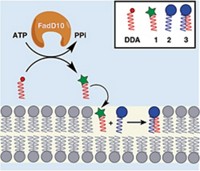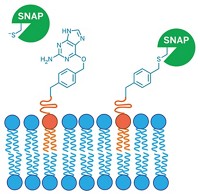Advertisement
Grab your lab coat. Let's get started
Welcome!
Welcome!
Create an account below to get 6 C&EN articles per month, receive newsletters and more - all free.
It seems this is your first time logging in online. Please enter the following information to continue.
As an ACS member you automatically get access to this site. All we need is few more details to create your reading experience.
Not you? Sign in with a different account.
Not you? Sign in with a different account.
ERROR 1
ERROR 1
ERROR 2
ERROR 2
ERROR 2
ERROR 2
ERROR 2
Password and Confirm password must match.
If you have an ACS member number, please enter it here so we can link this account to your membership. (optional)
ERROR 2
ACS values your privacy. By submitting your information, you are gaining access to C&EN and subscribing to our weekly newsletter. We use the information you provide to make your reading experience better, and we will never sell your data to third party members.
Business
Special Delivery To Mitochondria
Chemical tweaks direct peptide tags to the cell’s powerhouse
by Carmen Drahl
August 21, 2008
Defects in mitochondria, the cell’s energy factories, can play a part in cancer, diabetes, and other ailments. A Canadian research team has developed peptide-based biochemical tools that traverse the mitochondrial membrane, technology that could lead to better-targeted and more powerful treatments for disease. Kristin L. Horton and Kelly M. Stewart, graduate students in Shana O. Kelley’s group at the University of Toronto, presented the findings at a poster session in the Division of Biological Chemistry at this week’s ACS national meeting in Philadelphia.

Researchers have developed molecular shuttles that can enter and accumulate in mitochondria, but the relationship between chemical structure and passage through the mitochondrial membrane isn’t clear. Kelley’s group has found that the right blend of hydrophobic and cationic moieties allows peptides to enter this important organelle. “We think that these are universal properties that could be applied” to rationally design better carriers and therapies, Horton says.
To determine the chemical criteria for accessing mitochondria, the Toronto team tweaked the sequences of short cationic peptides. Such peptides have been used to carry nucleic acids and other cargo inside the cell membrane, but they cannot penetrate mitochondria. Replacing some cationic amino acid side chains with hydrophobic cyclohexane-containing side chains produced peptides that entered mitochondria in cultured cells (Chem. Biol. 2008, 15, 375). “People thought that only highly lipophilic structures with low charges could access mitochondria. We found that you can actually have quite a few charges on our peptide and still get through,” Kelley says.
Other mitochondria-targeting tags can deliver only small, nonpolar cargo, says Michael P. Murphy, an expert on mitochondria at the MRC Dunn Human Nutrition Unit, in Cambridge, England. “It would be nice to be able to deliver larger or polar molecules to mitochondria,” such as agents for conducting mitochondrial gene therapy, and Kelley’s work is a step toward that goal, he says.
In Philadelphia, Stewart disclosed that she and other Kelley group members are now looking into developing such cargoes. Meanwhile, Horton has exploited this strategy to design more potent anticancer peptides, by improving their targeting to mitochondria in cultured cells. The necessary next step in evaluating the peptides, Murphy tells C&EN, will be to learn how they behave in living organisms.






Join the conversation
Contact the reporter
Submit a Letter to the Editor for publication
Engage with us on Twitter